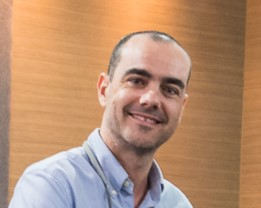讲座题目:TiO₂ heterostructures for the photocatalytic treatment of water
主 讲 人:Jorge Bedia
主 持 人:关小红 教授
讲座时间:4月11日 10:00
讲座地址:闵行校区 资环楼269室
主办单位:生态与环境科学学院
报告人简介:
Jorge Bedia is Industrial Engineering and obtained his Ph.D. in Chemical Engineering at the University of Malaga (Spain). Nowadays, he is assistant professor at the Chemical Engineering Department of the Autonomous University of Madrid (Spain) since 2013. His research interests include the synthesis and applications of MOFs and water purification by advanced oxidation processes, especially photocatalysis. Dr. Bedia is co-author of around 130 refereed journal publications (more than 5500 citations, H factor of 46), 4 book chapters, and 2 Spanish patents. He has presented over 200 works to national and international conferences with over 30 oral presentations. He has been involved in more than 20 research projects from different entities: European, national, integrated, or cooperative with other countries, and several research contracts with private companies. He is also editor of Separation and Purification Technology and has been recently appoint as Editor in chief of Catalysis Communications, both from Elsevier. He has reviewed more than 300 manuscripts for many different journals.
报告内容简介:
Titanium dioxide (TiO₂) is the most used semiconductor in photocatalysis due to its established activity and relatively low toxicity compared to other types of photocatalysts. However, the application of TiO₂ nanoparticles in slurry configuration makes the recovery of the photocatalyst difficult. Inaddition, the photocatalytic activity of TiO₂ is still restricted due to insufficient use of the sunlight spectrum and the rapid recombination of the photogenerated electron-hole pairs, which usually result in low degradation efficiencies under solar irradiation. This low efficiency can result in the generation of by-products that could be more toxic than the original contaminants. Many different approaches have been adopted to improve the efficiency and practical applications of TiO₂ photocatalyst. The deposition/combination of the semiconductor on a support may introduce mass transfer limitations, it is expected to facilitate the postseparation process of the photocatalyst. In this respect, carbon materials have gained increasing interest as supports due to their high structural stability, tunable porosity and particle size. Another alternative is the formation of a heterojunction structure or loading of a transition metal with TiO₂ that simultaneously boost the light absorption in the solar spectrum and improve the charge separation by the formation of an interfacial electric field because of band edge alignments. The aim of this talk is to abord some of these alternatives taking advantages of the supplementary properties of a support and a complementary semiconductor that can improve the TiO₂ properties resulting in an improved photocatalytic system.

